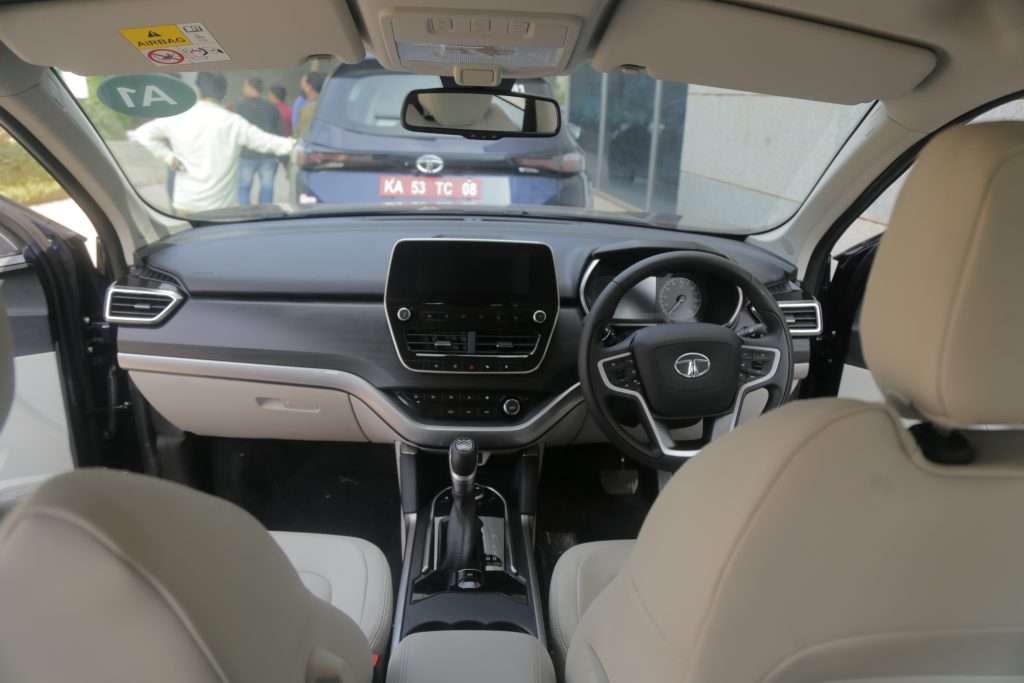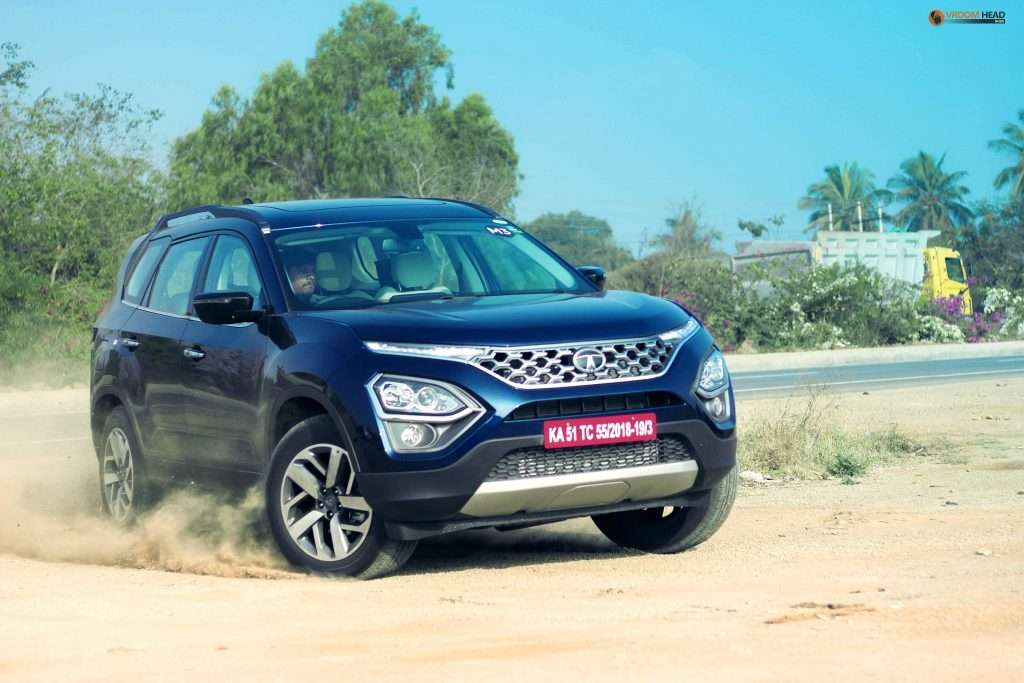Even before Tata Motors gives the all-new Safari an actual market debut, we get our hands on one to find out if it does justice to the nameplate
Words: Neeraj Padmakumar Photography: Sarath S
The Legacy
The Tata Safari was one of the first true-bred Indian SUVs to have ever surfaced here. When the first-gen Safari was launched in 1998, it was much lauded for its unmatched off-roading capabilities, the luxury on offer, and distinctive styling. Later in 2005, the SUV got a significant upgrade and more equipment. In 2012, the Safari Storme was introduced which had a set of time-groomed design, mechanical and equipment upgrades. The Storme seized production in 2019, marking the end of the first generation of the car here. In 2021, Tata Motors has, however, resurrected the Safari nameplate with an all-new vehicle.

2021 Tata Safari: What Is It?
Tata Motors has put the Safari plate on the 7 seater Harrier. Originally presented as the H7X concept, the SUV had later been showcased at Geneva in the production-ready form, named Buzzard. We had had a closer look at this 7 seater at the Delhi Auto Expo where it was showcased as the Gravitas. The Safari is what the Gravitas is called upon its actual market debut.
Being built upon the Harrier, the Gravitas, or the Safari, has many a thing in common with its 5 seater sibling. It is built on the same OMEGARC platform as the Harrier and thus has the same wheelbase (2741mm). However, the Safari has grown in size by a fair bit. There is a 60mm growth in the overall length, which owes its existence to the bigger overhangs at the rear. The Safari is also wider and taller than the Harrier. The Safari comes in 6 seater and 7 seater configurations.

Design
The overall design has evident cues from the Harrier. The resemblence to Harrier is most evident at the front end. The only thing that could set the Safari apart at the front would be the chrome plated grille, which gets Tata’s new signature Tri-Arrow design.The top-variant gets powerful HID Xenon headlamps and DRLs that double as turn signal lamps.
It is the profile that renders the new Safari a distinctive stance. The design seems familiar till the C pillar, beyond which the lines have been redrawn. The SUV gets the signature ‘stepped-up’ roof, from the original Safari. There are also other design bits like the satin silver roof rails that further enhance the tall stance. The new Safari stands on bigger 18-inch alloy wheels shod with 235/60 rubber. The Safari, unlike the Harrier, gets disc brakes for all four wheels. The rear still looks quite like that of a Harrier but is quite sleek-looking and well-drawn.
Interior

The Safari’s cabin resembles that of the Harrier on many fronts. But to keep things on the premium side, The Safari gets Benecke Kaliko leather upholstery in Oyster White shade. This gives the cabin an airy feel. The dashboard comes finished in a new Ashwood trim. There are also all the familiar equipment on offer straight from the Harrier, like the large Panoramic sunroof, 8.8-inch touchscreen infotainment system that gets iRA suite, 9 speaker JBL audio system, motorized driver seat.
A key improvement on the Safari is the electronic parking brake with Auto-Hold function, which replaces the awkward aircraft-style parking brake lever on the Harrier. This works exceptionally well on the automatic model.

The 6 seater version gets captain chairs for the middle row. These are obviously, the most comfortable of the lot. Most body sizes could fit in with much comfort on these seats. The seven-seater gets a middle bench though. The third row is the key talking point on the new Safari. Tata claims really good numbers for space on the third row. You get 889 mm of legroom and 832 mm of headroom here. The third row, however, lacks thigh support and has a rather vertical seating angle of 23 degrees. I feel the Safari’s to be the best third-row among the competition. One could credit the sense of space here to the increased length and the tall-set roofline. There are also a bunch of creature comforts on offer here, like storage pouches, blower with selectable fan speed and a couple of USB charging points.

Specifications
The all-new Safari is built on the OMEGARC platform, which is in-fact, derived from Land Rover’s D8 architecture. This platform has LR’s hydra bush suspension at the front, much like it did on the Harrier. However on the Safari, the rear suspension has been reworked. The 2.0L KRYOTEC diesel engine comes straight from the Harrier and produces the same 170 hp and 350 Nm. It is mated either to a 6MT or a 6AT. The 6AT is the same box that had debuted through the 2020 Harrier. But, the 6MT is a new Fiat-sourced manual transmission that gives you absolutely smooth shifts, unlike the notchy Tata gearboxes.
The biggest difference from the previous Safaris is that the 2021 car misses out on AWD. What is even more disheartening is the fact that the all new Safari is front wheel driven! No RWD fun this time… Tata Motors is however, planning to give the Safari AWD sometime soon. There are also various drive modes and Terrain controls on offer, much like the Harrier.

How Is It To Drive?
The engine feels quite punchy in general. The turbo kicks in at around 1800 rpm. Post the same, there is a very strong mid-range punch all the way till 3750 spins, at which the torque peaks out. Rev it further and there is an abrupt drop in power, which later dies out somewhere near 3850 rpm. This behemoth would sprint to 100kmph from a standstill as quick as in under 12 seconds. One could definitely push the Safari to some serious speeds.
The manual gearbox offers smooth shifts and is very easy to handle. The 6AT is quite smart in shifting and gives you the right gear for every need, just at the right time. There is minimal lag between the shifts here. As for the NVH levels, there are minimum vibrations and harshness felt at most rpms. This engine is quite audible though, something to be forgiven taking into consideration its massive size.

The handling is something the Safari deserves praise for. Due to the efficiency of the chassis and the suspension rework, the SUV handles pretty well around corners and in high-speed scenarios. There is definitely a fair bit of body roll felt around corners, courtesy be to the bump in the height and ground clearance. However, owing to its monocoque construction, the impact of this on the overall handling is minimal. I felt the Safari to be better planted and better-behaving at high speeds than the Harrier, which could be due to the added weight that it has and the suspension rework.
The absence of an AWD does limit the offroading and terrain handling abilities of the Safari. It stays sub-par to its predecessors when it comes to tackling terrains. However, the presence of the terrain control modes does ease up things and provides for better tackling of light and moderate terrains.

The ride quality is something one would fall for in the new Safari. The SUV offers composed and comfortable rides in all its seats and in almost every road scenario. The rear is so well sprung that there is a highly poised ride at the middle row. The Safari is definitely the best riding car among the competition.
The long list of safety tech such as the ESP, airbags, ABS and the 4 disc brakes imparts an unmatched sense of safety to the driver and the occupants alike.

Verdict?
Is it really any Safari? – Ask me this and I would say ” If a butch go-anywhere SUV with lotsa tech inside the cabin which by the way, is a very comfortable place to be in, is what ‘Safari’ means for you, then sorry, this ain’t! But if your interpretation of ‘Safari’ is a good looking, spacious 3-row SUV that excels in the in-cabin comfort and ride quality and which you wouldn’t want to take on serious off-road trails, then yes, this one fits!”
As for the competition, the Safari has the outgoing XUV500, Hector Plus and the Innova Crysta as its key rivals. If priced right, it could easily be the king in its segment.

ALSO READ:
- Tata Altroz iTurbo Review: A Hot Hatch By Any Chance?
- Tata Altroz Diesel Review: Staying Fit In The Game!
- 2020 Hyundai I20 Review: ‘Good Things Come With A Price!’






